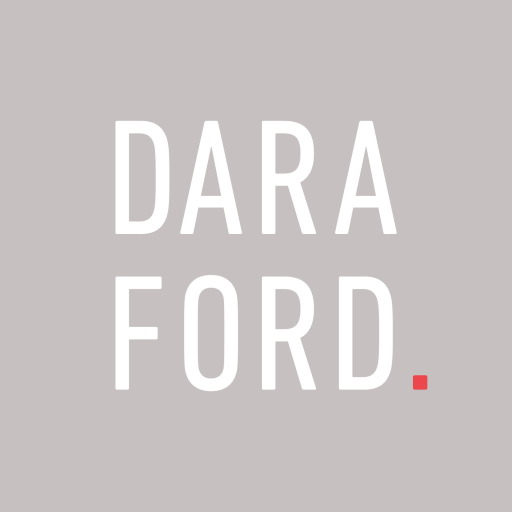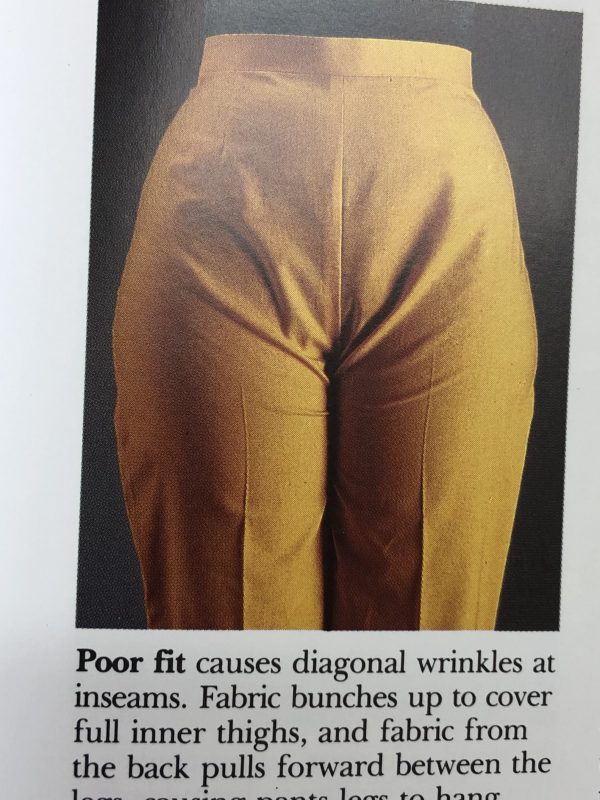
For many women I speak to, finding the perfect fitting pair of trousers is a major frustration. If they fit the hips they rarely fit the waist and vice versa. But why is it so difficult to find the perfect trousers? Is it the retailers’ fault? Are they just not trying hard enough or are other issues at play? And, most importantly, can something be done about it?
I’d like to share my insights into why trousers are such a difficult garment to get right and give you some ideas on how to find a better fit. I will cover the following topics:
- Why is it so hard to find trousers that fit?
- How to assess your body shape for trousers
- Common trouser fit problems and how to fix them
- How to recognise whether trousers can be altered to fit you better
I’ll be going into a lot of detail so let’s get started!

1. Why is it so hard to find trousers that fit?
In my experience as a women’s bespoke tailor, there are two things that I find most difficult in terms of fit: trousers and sleeves. In fact, getting the latter right is so tricky that Savile Row tailors have their own term for it: Sleeveology.
Trouserology is equally challenging. So why is it so tricky even for the best tailors in the world?
Trouserology
In order to understand the fit of trousers we need to look at the body and how it is shaped. Crudely speaking the body is made up of a series of geometrical shapes – spheres, cylinders, cubes and ellipsoids.
When cutting patterns, tailors and designers transform a two-dimensional object into a three-dimensional form. In fact, there is a fourth dimension in garment construction – movement (both of the body and the cloth). It is not only the shape of the separate body parts that play a role here but also proportion, i.e. how they relate to each other.
This makes creating well-fitting trousers so intricate. As opposed to, say, a skirt, which is essentially a tube that hangs off the waist, trousers do not just need to wrap around the body. They need to fit around the legs, the hips, stomach and waist as well as from front to back through the crotch. Women, in particular, tend to put on weight in more varied ways than men and this adds another layer of complexity to the fit.
The measurements needed to draft a pair of trousers are: waist, hip, thigh and knee circumference, hip and seat depth, trouser and crotch length. The fit will be affected by the shape of the legs, hips, stomach and seat. You can begin to see why this is so tricky!
2. How to assess your body shape for trousers
One of the most important elements to consider when buying trousers is the shape of your seat. If your bottom is very full you need more length in the crotch seam to avoid the waistband being pulled down at the back. Similarly, if your backside is quite flat you will find excess fabric at the back of your leg causing unsightly wrinkles.
Another important area to look at are the thighs. Are they full on the outside or inside of the leg? A full outer thigh will cause diagonal creases in the direction of the side seams, whereas full inner thighs will cause the fabric to pull inwards and bunch up in the crotch.
The following images are from the book ‘The Perfect Fit‘ and illustrate what these common fit problems look like.
Do any of the illustrated fit problems look familiar to you? Most trousers are drafted to a ‘standard’ figure. Each brand will have its own ideal client figure when deciding what their standard is, so this could vary from store to store. But chances are that you will have a similar fit issue in most clothing labels as they do try to find an average figure to fit.
Once you have identified which of the figures above best matches your own, you can move on to the next stage, which is how to improve and fix the fit.
3. Common trouser fit problems and how to fix them
Following on from the images above here are some suggestions on how the fit issues caused by a fuller abdomen, thighs or seat can be improved. Please note that all of these alterations will depend on what is possible in terms of the seam allowance. I will go into more detail on that in point 4.
Full abdomen
Issue: More length is required over the tummy. Solution: the waistband needs to be raised at the centre front to give an extra centimetre or two.
Hollow or swayback
Issue: This is a common posture variation in women. The back is curved and a small or more extreme hollow is present below the waist. Horizontal wrinkles appear below the back waistband. Solution: Lower the waistband at the back of the trousers fading out to nothing at the side seams.
Full seat (round bottom)
Issue: Full hips taper into a small waist. The trousers pull down at the back and feel tight in the crotch seam. Solution: the crotch seam needs to be lengthened at the back inseam.
Flat seat
Issue: Excess fabric gathers below the hips at back. The back crotch seam is too long and needs to be shortened from two sides. Solution: Lower the back waistband at centre back and shorten crotch seam at back inseam.
Full outer thighs
Issue: Not enough fabric on the outside of the trousers. Diagonal crease lines point towards the outer thighs. Solution: the outer side seams need to be let out.
Full inner thighs
Issue: Not enough fabric at trouser in-seam. Fabric is pulled into the crotch. Solution: Let out in-seam of trousers from the knee up to crotch seam.
Thin thighs
Issue: Trousers are loose throughout the leg and look baggy. Solution: Both in- and out-seams need to be taken in and tapered to hug the thighs and create shape.
Trousers too long | too short
This is perhaps the most common fit problem of all. The fix seems obvious: let out or shorten the hem. But, as one of my followers on Instagram pointed out: when you change the length of a pair of trousers significantly, it can cause the knee to be out of place. Solution: Ask your tailor to take the knee position into account when shortening or lengthening the trousers and make sure the pattern is balanced up to that point. This could mean taking in or letting out the in-seam slightly.
A good alterations tailor will also be able to advise you. I would recommend finding one who takes the time to do a fitting with you rather than just asking how much you want something taken in or letting out by. Unfortunately, some less-skilled tailors will always make alterations at the centre back seam which will not solve all problems and could make fit issues worse.
You can find some tips on how to find a good tailor here.
4. How to recognise whether trousers can be altered
With quite a few of the solutions suggested above having enough seam allowance is vital. Without sufficient seam allowance alterations to garments cannot be made.
In mass-produced garments, there is usually only 1 centimetre or a 1/4 inch of seam allowance included. The reason for this is that it keeps production costs down by using less fabric as well as making it easier to match seams to each other without the use of pins. This speeds up the sewing process and again makes production cheaper.
Finding clothing with deeper seam allowances makes it easier to alter them in the future and shows that they are of higher quality. So have a good look inside the clothes you are buying and consider whether the necessary alterations according to your body shape will be possible. If not you might want to buy the next size up to give yourself more scope.
Please also take into account ‘notches’ in the seam allowance, which will further reduce the possibility of letting out a seam. Notches are little cuts into the edge of the fabric allowing factory workers to match up pattern pieces at speed during sewing.
If deeper seam allowances are hard to find you could also start thinking more creatively whether there is extra fabric elsewhere that could be moved into a new location. For example, there is usually more fabric in the hem which could be used to add a gusset at the back waistband if needed. Again, a good tailor will help you think outside of the box and find a creative solution to most problems.
I hope the above is helpful in understanding why it is so difficult to find a great fitting pair of trousers and that you now have some strategies on how to improve the fit for your body shape.
And if this all sounds like too much hassle you could consider the option of made-to-measure tailoring.
More affordable than bespoke a great fit is nevertheless achievable. You can also choose from thousands of cloth, lining and personalisation options to create your perfect pair. Find out more about what the difference between made-to-measure and bespoke is here.
I provide both services and would be happy to advise on which is the best option for you.











